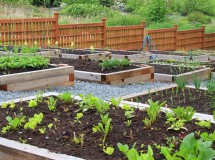- Carbon dioxide is used by plants as a carbon source to produce sugar molecules during photosynthesis. Energy from the sun is stored in the sugar, and oxygen is given off in the process. Respiration, taking place day and night, reverses the process of photosynthesis. Respiration breaks down sugars to release the energy so it can be used for growth, maintenance, movement and reproduction: metabolic processes. The process of respiration releases carbon dioxide and uses oxygen.
- Plant growth takes place between about 60 and 100 degrees Fahrenheit. Respiration must be happening for growth, and for other metabolic processes requiring energy, to take place. A metabolic process is a set of chemical reactions required to support life. The rate of respiration and metabolism in most plants increases with increasing temperature within the optimal range. Increased respiration means more energy is available, and as long as nutrients are also available, the plant will run metabolic processes.
- Plants can use (respire) up to half the amount of sugar that they produce each day, and that also means that respiration is using the oxygen generated by photosynthesis. Respiration increases as temperatures rise. Photosynthesis also increases, but not as much as respiration. This means that the amount of carbon dioxide given off by increased respiration rises faster than the amount of oxygen given off by increased photosynthesis.
- Scientists observe a rise world temperatures and the amount of carbon dioxide in the atmosphere. Researchers think the two are related, and refer to the process as global warming. As temperatures rise, plant respiration increases. This uses more oxygen and releases more carbon dioxide; photosynthesis is too slow to remove the extra carbon dioxide. Dan Bruhn, a plant researcher at Denmark's Riso National Laboratory, suggests that this may raise the percentage of carbon dioxide in the atmosphere and contribute to global warming.
Respiration
Plant Metabolism
Temperature Response
Impact on Global Warming
SHARE







































